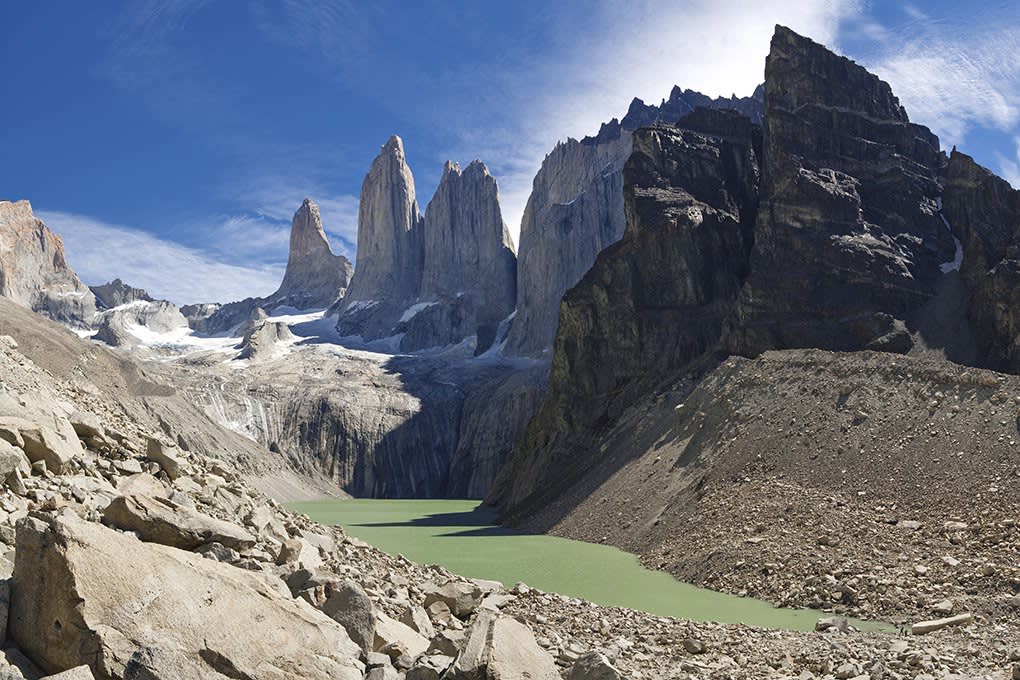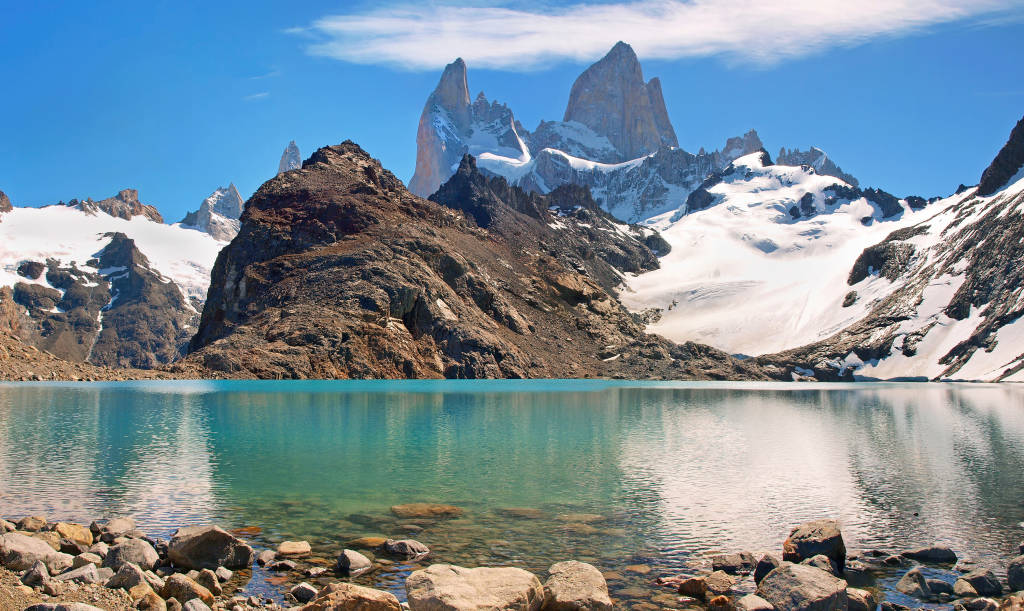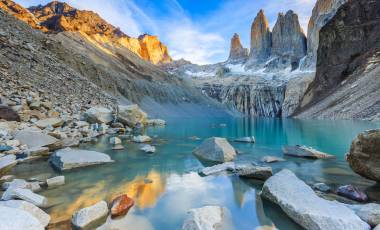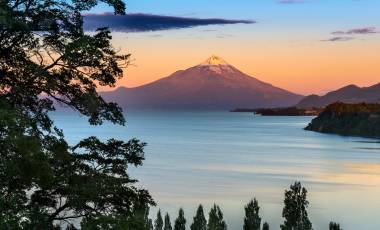
Reasons to Visit Patagonia
Read time – 3 minutes
Jim Eite (Exodus’ Product Director) explores the exquisite expanse of wilderness and glaciers of Patagonia, straddling Argentina and Chile.
Travel to Patagonia
The journey to Patagonia flips you upside down and turns you inside out. Patagonia is a long, long way away. Out of the window of the plane, we leave the expanse of Buenos Aires and a night’s tango behind as we head to the shores of Lago Argentino and the remote outpost of El Calafate.
London is suddenly a long way away, the only thing that seems to remain the same is the unpredictability of the weather.
The weather was relaxed when we arrived in Buenos Aires – in early October, it’s their spring and signs of life are starting to creep through. Buds on the trees, flowers straining for the warmth of the sun, spring is most certainly in the air.
What a difference a flight makes. In El Calafate the Patagonian weather is going about its business, whipping up dust from the surrounding steppe, blowing icebergs down the length of Lago Argentino and bringing in a cold snap from Antarctica.
The weather in Patagonia is always going to play its part, changing as quickly as the plot of Heroes. Dark rumbling clouds carrying rain and snow one minute, wispy white clouds speeding across the sky the next, and bright sunshine the next. Anyone travelling to Patagonia must be prepared for everything and anything.
Our itinerary was busy, covering hundreds of miles but taking in some of the most majestic scenery I’ve ever seen. The immense Moreno Glacier and rugged summit of Mt Fitzroy, the towering peaks of Torres del Paine National Park, huge lakes and windswept grasslands, remote Ushuaia, the Beagle Channel and Tierra del Fuego.
They are all names that echo in the minds of those who’ve grown up watching BBC documentaries or scanning copies of the National Geographic, each as majestic and unique as the one before but none that would disappoint.
Torres del Paine
The highlight for me was Torres del Paine. Situated about 150km from Puerto Natales, and the main draw encouraging travellers to head south from Santiago, almost along the length of the entire country lies the vast sweeping vista of the Torres!
Renowned for its rugged unspoilt beauty, this raw yet vulnerable landscape is an inspiring destination. The stunning lakes and mountains draw sightseers, but to explore its hidden depths you need to pull on your boots, lace them up tight and head off into the wilderness.
The landscape is dominated by the ‘Paine Massif’, a spur of the mighty Andes created over 10 million years ago as a result of lava breaking through the earth’s crust, slowly rising up shaping crags and peaks for the wind and rain to then get hold off. Its centrepiece is the three granite towers, the Torres Del Paine, rising some 3000 metres above sea level and picturesquely reflected in a small glacial lagoon whose hues change as quickly as the weather.
The iconic Towers and Horns of Paine, the vivid blue of Lago Nordenskjöld surrounded by a layer of white salt deposits, the immense Glacier Grey spilling down into Lago Grey, and the stunning walking.
Everything was perfect on our trek to the base of the towers, a light, cooling breeze pushed us up the valley towards Refugio Chileno, the sun breaking through onto snow-capped peaks high above.
The four-hour climb is mainly on good paths until you reach the moraine at the foot of the final 45min push; at which point our guides encouragement became invaluable as they slowed to help those less nimble.
Then we were rewarded with the most beautiful and rewarding sight at the top, the Towers of Paine glittering in the early afternoon sun, deep blue skies and fluffy white clouds hugging their summits. Patagonia: for me, it’s not the end of the earth but simply the beginning.
Discover holidays to Patagonia below and plan your adventure.

 Torres del Paine
Torres del Paine Patagonia landscape
Patagonia landscape

